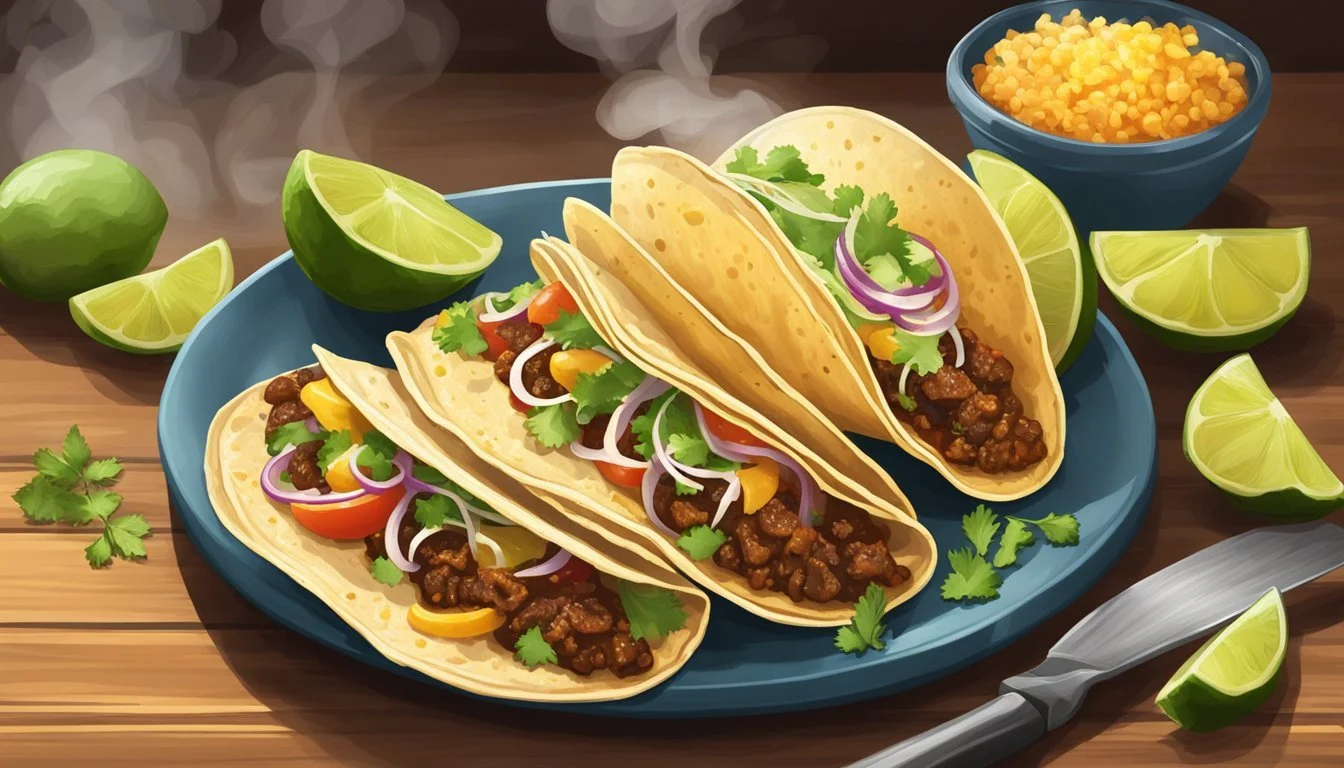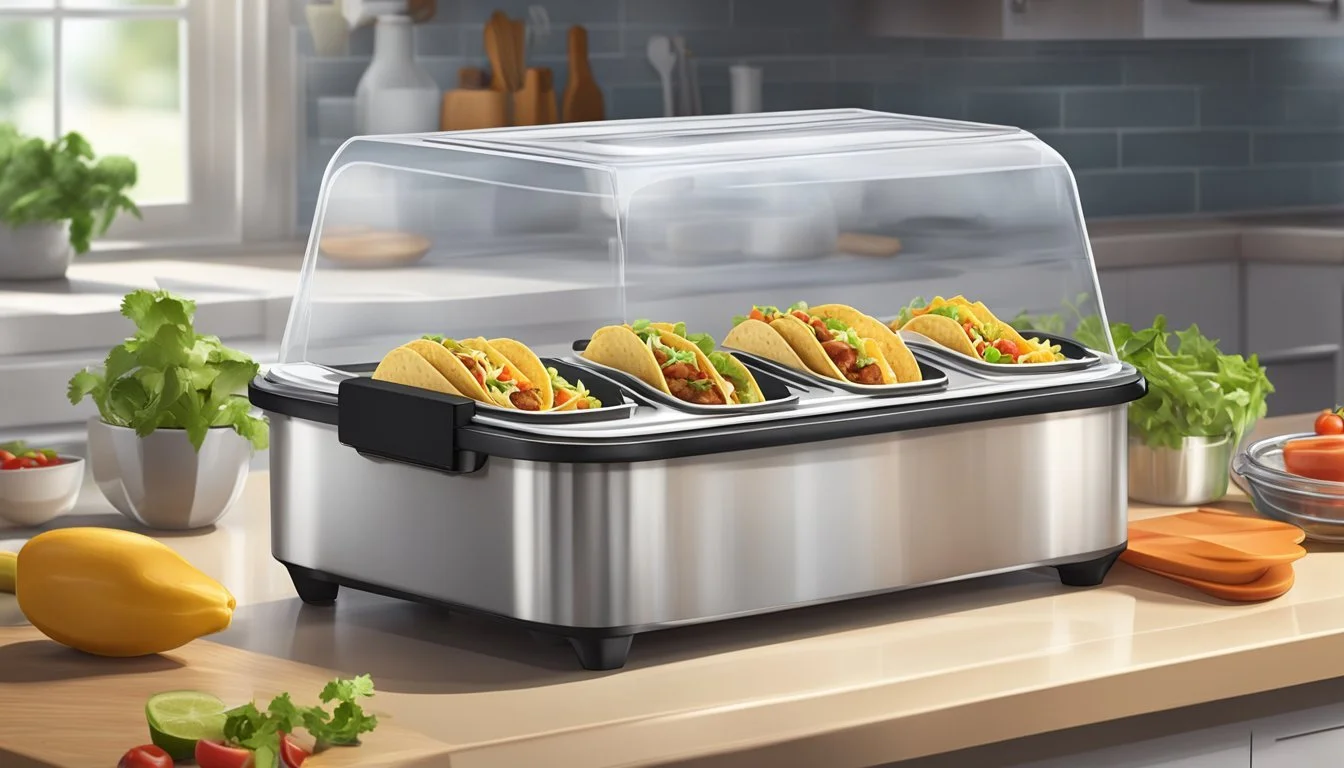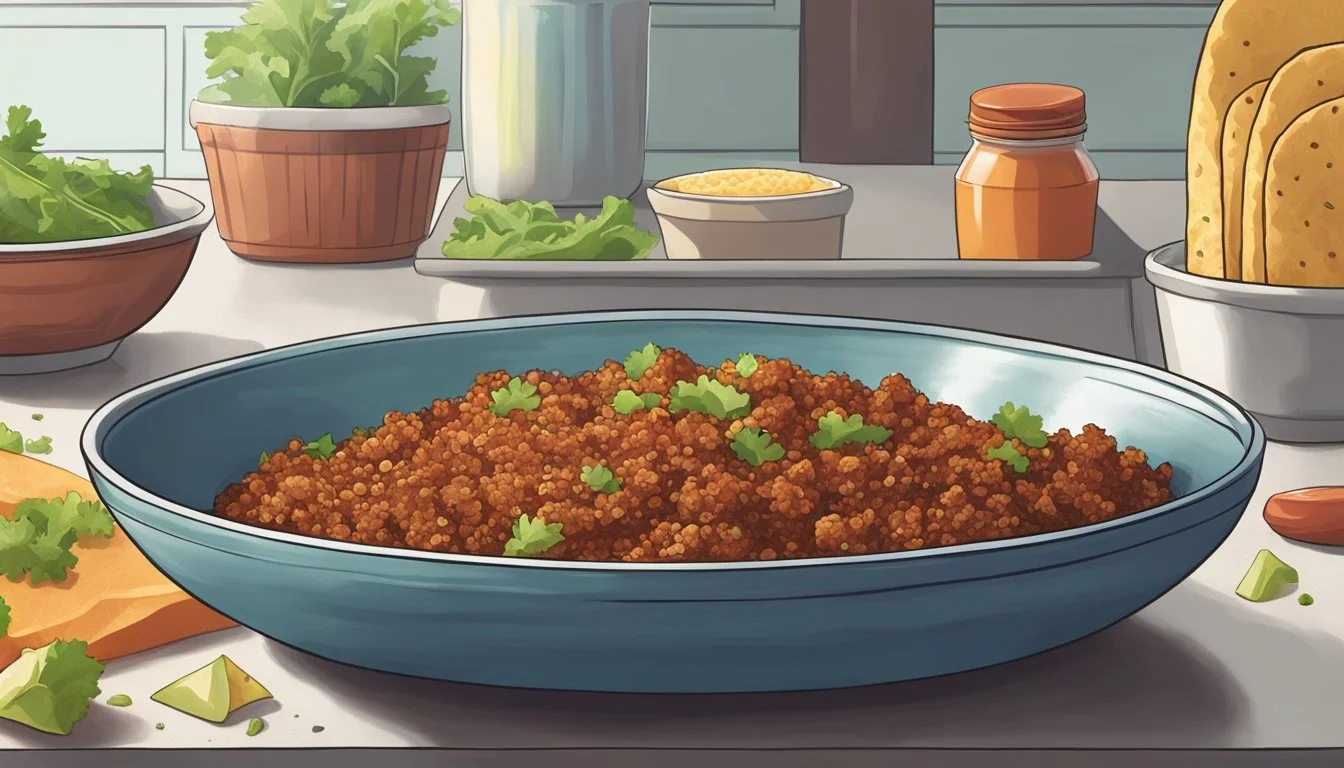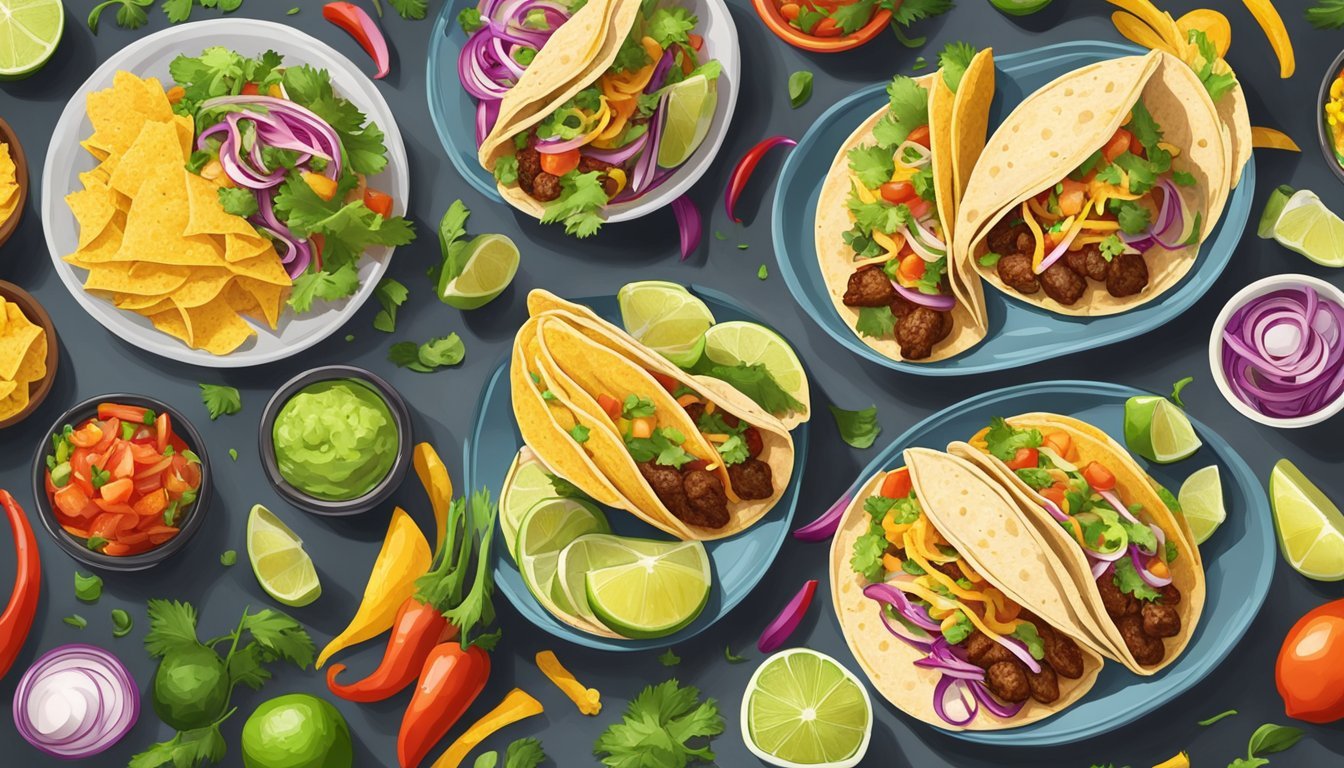How Long Do Freshly Prepared Tacos Last
Shelf Life and Storage Tips
Freshly prepared tacos offer a delightful combination of flavors and textures, with each component playing a role in the overall dining experience. The longevity of these flavors and the safety of the tacos for consumption depend on how they are stored after preparation. To maintain the quality and safety of tacos, it is crucial to follow proper storage guidelines.
The shelf life of tacos is influenced by various factors, including the ingredients used and the temperature at which they are kept. Tacos made with cooked meats such as chicken, beef, or fish should be stored in the refrigerator within two hours of cooking to prevent bacterial growth. The freshness of vegetables and the integrity of sauces or creams also contribute to the overall lifespan of the tacos when refrigerated.
Storage conditions are key to preserving the quality and edibility of tacos. An air-tight container or wrap is recommended to prevent air exposure, which can compromise the texture and flavor of the ingredients. When stored properly, the different components of tacos can maintain their freshness for a safe consumption period, typically ranging from 2 to 4 days when refrigerated. To extend their shelf life, some may opt to freeze the components, although this can affect the quality of some fresh ingredients.
Determining Freshness and Shelf Life
When assessing the shelf life of freshly prepared tacos, one must consider both visual and olfactory cues to determine if the food remains suitable for consumption.
Indicators of Quality and Spoilage
One can gauge the quality and freshness of tacos by paying close attention to odor, flavor, and appearance. A fresh taco should emit appetizing aromas of the ingredients used, such as spiced meat, fresh vegetables, and herbs. Conversely, an off-putting or sour smell is a clear indicator that the taco is no longer fresh.
The flavor should be consistent with how it tasted when first prepared; any sign of bitterness or an unusual taste may signal spoilage. Visual cues include discoloration or the presence of mold, which may appear on any taco component including the meat, salsa, dairy products such as cheese or sour cream, and even the tortilla itself. These are unmistakable signs that the taco should not be consumed.
Understanding Expiration Dates
Expiration dates, often found on packaged ingredients such as taco shells or tortillas, serve as a guideline for determining the product's peak quality. It is important to note that while some packaged taco components may remain safe to consume past their expiration date, their quality, texture, or taste might be compromised.
For freshly prepared components, no formal expiration date is provided, and one must rely on the aforementioned signs of spoilage. The general shelf life of cooked taco meat stored properly in the refrigerator is approximately 2-5 days. Freshness can be extended by freezing the meat, potentially preserving it for 2-6 months if frozen right after cooking and stored correctly. Vegetables and other perishable toppings should be consumed sooner, ideally within 1-2 days, to ensure quality and safety.
Safe Storage Practices for Tacos
Proper storage extends the shelf life of tacos and ensures safety. Abiding by recommended temperatures and techniques is essential for refrigeration and freezing.
Refrigeration Guidelines
For optimal freshness, one should store tacos in the fridge within two hours of preparation. The refrigerator temperature should be set below 40°F (4°C) to inhibit bacterial growth effectively. It's crucial to separate the taco components before refrigeration:
Meat: Should be placed in an airtight container or tightly sealed in plastic wrap to prevent cross-contamination.
Toppings & Tortillas: Vegetables and dairy-based toppings like cheese and sour cream should be stored separately from the meat to maintain their integrity. Tortillas can be wrapped in aluminum foil or stored in resealable bags.
Duration: Cooked taco meat typically lasts between 3-4 days when properly refrigerated.
Freezing and Defrosting Techniques
To freeze tacos:
Use freezer-safe bags or airtight containers to avoid freezer burn.
Label the packaging with the freeze date for efficient inventory management.
For defrosting, transfer frozen tacos to the refrigerator for a gradual thaw overnight. If in a hurry, one can use the defrost setting on the microwave, but this may affect the quality of the meat and tortillas.
Freezer Lifespan:
Whole tacos are not ideal for freezing due to moisture in toppings.
Taco meat on its own can last for 2-6 months in the freezer.
Preventing Foodborne Illnesses
To maintain food safety and avoid foodborne illnesses, it is crucial to understand the risks associated with bacteria in taco meat and to follow best practices when reheating.
Common Bacteria in Taco Meat
Freshly prepared tacos can harbor harmful bacteria if not handled correctly. The two most common types of bacteria found in inadequately stored or handled taco meat include Salmonella and E. coli. These bacteria can cause severe food poisoning, with symptoms ranging from stomach cramps to more serious gastrointestinal issues.
Food Safety Tips to Prevent Bacteria Growth:
Always store taco meat at 40°F (4°C) or below.
Consume within 3-4 days when refrigerated.
Keep cooked and raw meats separate.
Use clean utensils and surfaces during preparation.
Best Practices for Reheating
Reheating taco meat properly is another critical step in preventing foodborne illnesses. Heating meat to the right temperature kills most types of harmful bacteria.
Guidelines for Safe Reheating:
Always reheat meat to an internal temperature of 165°F (74°C).
Use a food thermometer to check the temperature.
When using a microwave, stir the meat halfway through reheating to ensure even heating.
By adhering to these measures, one can significantly reduce the risk of foodborne illnesses, ensuring that taco meat remains a safe and enjoyable meal.
Specific Considerations for Taco Ingredients
The longevity of tacos is greatly influenced by the individual shelf life of their ingredients and the methods used to store and handle them. Effective management of the various components is essential to maintain freshness and safety.
Meat Varieties and Handling
Ground Beef:
Refrigerate or freeze immediately after purchase.
Lasts 1-2 days in the fridge; up to 3-4 months when frozen.
Chicken:
Refrigerate within two hours of cooking.
Stays fresh for up to 3 days in the fridge; 2-6 months frozen.
Produce and Dairy Preservation
Onions and Tomatoes:
Store in a cool, dry place; lasts 1-2 days once diced.
Lettuce:
Keep refrigerated, wrapped in paper towels to absorb excess moisture.
Fresh for about 1 week.
Corn:
Refrigerate with husks on; consume within 1-2 days.
Shredded Cheese:
Refrigerate in an airtight container or sealed bag.
Stays good for 3-4 weeks; up to 6-8 months if frozen.
Sour Cream:
Lasts up to 2 weeks when kept in the refrigerator, always sealed.
Additional Components and Shelf Stability
Salsa:
Store-bought salsa can last up to 1 month after opening if refrigerated.
Homemade salsa should be consumed within 5-7 days.
Lifecycle of Leftover Taco Meat
Storing leftover taco meat properly can greatly affect its shelf life, with different outcomes for refrigeration versus freezing. This section outlines the specific durations for which taco meat remains safe and enjoyable when stored correctly in the fridge or freezer.
Refrigerated Taco Meat Longevity
After a delightful taco night, leftover taco meat should be carefully stored in the refrigerator. Cooked ground beef, which is often used in tacos, is safe to consume for up to 3-4 days when refrigerated at or below 40°F in an airtight container. This also applies to chicken taco meat and taco meats made from ground turkey and ground chicken. The storage method's effectiveness hinges on maintaining a constant, cold temperature to prevent the proliferation of harmful bacteria.
Frozen Taco Meat Storage Duration
For those who prefer long-term storage, freezing taco meat extends its edibility. Leftover taco meat can last for up to six months when sealed in freezer-safe bags or containers and kept at 0°F or lower. Both cooked ground beef and various poultry-based taco fillings like chicken taco meat benefit from this method. However, it's vital to note the possible texture changes due to freezing, which can affect the quality upon reheating.
Maximizing Enjoyment of Tacos
To experience the full spectrum of flavors and textures that tacos offer, it's important to consume them at peak freshness. By focusing on taste retention and texture and aroma considerations, one increases the potential for a satisfying taco meal.
Taste Retention Strategies
Freshly prepared tacos are best eaten immediately as the taste and quality of the ingredients are optimal at this point. Taco shells and tortillas can become stale if left uneaten for too long. If preserving taco taste is necessary, it's advisable to:
Avoid Moisture: Store ingredients separately to prevent sogginess.
Temperature Control: Keep hot fillings warm and cold fillings cool until consumption.
Texture and Aroma Considerations
A taco's inviting aroma and crisp texture can enhance the flavor, making for a more enjoyable meal. To maintain these qualities:
Taco Shells: Warm hard shells in the oven at 350°F for 5-7 minutes to maintain crispiness.
Tortillas: For soft shells, a short burst in the microwave at 50% power can help retain pliability without overcooking.
Nuanced Tips for Specific Taco Varieties
When preparing tacos, each variety has particular storage considerations, especially when dealing with fresh ingredients like fish or diverse produce utilized in vegetarian options.
Fish and Seafood Tacos
Fish and seafood tacos demand careful attention due to their perishable nature. The optimal consumption window for freshly prepared fish tacos is within 2 hours when kept at room temperature. If refrigerated, they should be eaten within a day to ensure quality and safety.
Storage Tips:
Temperature: Keep chilled at below 40°F (4°C).
Airtight Containers: Store in a container that seals well to prevent air exposure.
Fish Types:
Mild White Fish: enjoys wider popularity in Mexican cuisine.
Shrimp: quick-cooking and a crowd-pleaser but deteriorates quickly.
Vegetarian and Vegan Taco Options
Vegetarian and vegan tacos can generally last a bit longer due to the absence of animal products. These tacos maintain quality for up to 2 days in the refrigerator, although the freshness of ingredients like avocado will decline quicker.
Avocados and Tomatoes: Store with a squeeze of lime to mitigate browning.
Mushrooms: Keep them dry and they will last longer without getting slimy.
Storage Best Practices:
Correct Sealing: Tightly wrap or use containers that limit oxidation.
Separation: Store components like salsas and guacamole separately to extend their shelf life.
Addressing Common Concerns
When it comes to enjoying tacos, safety and mindful consumption are crucial. This section will cover how to handle allergic reactions and minimize food waste efficiently.
Handling Allergic Reactions
When serving tacos, it is imperative to be aware of common allergens such as dairy, gluten, and nuts that may be present in taco fillings or shells. One should:
Clearly Label Tacos: When serving, indicate ingredients that are potential allergens.
Offer Alternatives: Provide substitute fillings and gluten-free shells to accommodate individuals with allergies.
Be prepared to respond swiftly if an allergic reaction occurs, having antihistamines accessible and understanding when to seek medical help.
Minimizing Food Waste
Efficient storage is key to preserving fresh tacos and minimizing food waste. Key points include:
Proper Storage: Store ingredients separately in airtight containers and refrigerate promptly.
Ingredient Fridge Life Freezer Life Cooked Meat Up to 4 days 2-6 months Taco Shell 5-7 days* Not recommended
*When heated as instructed
Monitor Spoilage: Regularly check for spoilage signs or off-odors in both cooked and raw taco ingredients to avoid the risks associated with spoiled meat and other contaminants.
By adhering to these practices, one can ensure taco enjoyment is both safe and environmentally considerate.
Advanced Preservation Techniques
Preserving the freshness and extending the shelf life of freshly prepared tacos involves methods that reduce exposure to air and microbial growth. These techniques ensure that the tacos remain safe to consume for longer periods.
Canning and Vacuum Sealing
Canning is not typically associated with tacos due to their varied components, but for certain taco fillings such as salsas or meats, it can be feasible. Meat fillings can be pressure canned, following strict temperature and time guidelines to prevent bacterial contamination.
Beef: Pressure can at 240°F (115.6°C) for 75 minutes for pints, 90 minutes for quarts.
Chicken: Process similarly to beef, ensuring all meat is covered by liquid in the jar.
Vacuum sealing, on the other hand, is highly effective for tacos or their ingredients. It involves removing air from the package before sealing, which significantly reduces the likelihood of bacterial growth and freezer burn if the tacos or ingredients are stored frozen.
Freeze meat fillings first to maintain shape.
Use a vacuum sealer to remove air.
Label with the date of sealing before storing in the freezer.
Utilization of Preservatives
Preservatives can play a role in preserving freshly prepared tacos, though they are more commonly used in the individual ingredients. Airtight containers are essential when using preservatives to ensure the longevity of the preservatives' effectiveness.
Common preservatives include:
Sodium benzoate: used in acidic foods like salsas.
Calcium propionate: found in tortillas to prevent mold growth.
The use of preservatives must comply with food safety regulations, and their amounts should be carefully measured to ensure consumer safety. Always store ingredients with preservatives in airtight containers to maximize their shelf life.











